)
E-bike Pedal Guide
If you commute
for work or enjoy longer bike rides, you should take a moment to choose the
best pedals for your needs. You can ride your e-bike with either a platform
pedal or a pedal system.
Find out
everything about the different types of pedals here in our guide and start your
next adventure.
E-bike Platform Pedals
This classic
pedal is flat and has a large contact surface on both sides
for your foot, which is usually roughened or rubberised. The coating gives you
extra grip and a stable hold on the pedal even at higher speeds.
Often, the
pedals are equipped with Germany StVZO-compliant reflectors that can help
improve visibility at dusk and in the dark.
The advantage of
platform pedals on the e-bike is above all the flexibility. A quick
trip to the bakery or café is possible since you can easily get off the pedals.
You don’t need any special equipment or special cycling shoes - you can easily
ride with street shoes. Perfect for daily rides or touring riders who
plan longer walking passages.
There are also
platform pedals that have small metal pins that press into the
sole of your shoe. This gives you significantly more support and
minimises the risk of your shoe slipping off the pedal. This type of pedal is
often used for e-MTBs or e-gravel bikes.
For optimal use,
however, we recommend special flat-pedal cycling shoes that have a rubber sole
with a particularly slip-resistant composition. With these you literally
"stick" to the pedals.
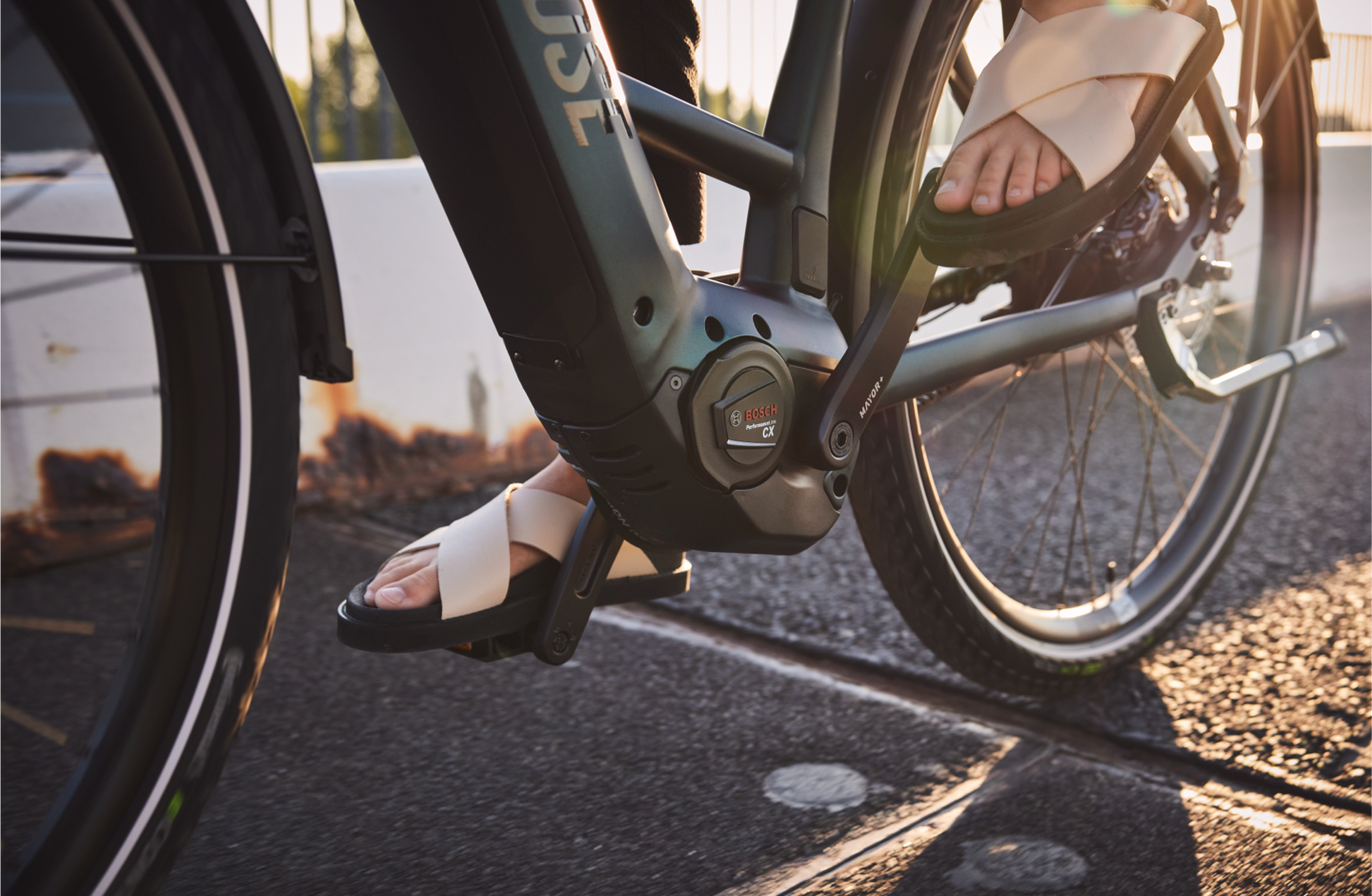)
E-bike Duo Pedals
If you want the
best of both worlds, the duo pedal, also known as a combination pedal,
is a good choice. With this pedal, you don't have to choose between a fixed
connection to the shoe and the classic flat pedal.
The duo pedal
has a click system on one side so that you can firmly connect your cycling shoe
to the pedals.
For this you
need special cycling shoes and cleats that are compatible with the two-hole
standard of the pedal. The cleats are mounted from below in the holes of the
shoe sole and remain there. You click in with a light push on the pedals.
Turning the heel outwards releases the connection again. How much force is
needed to unclick can be individually adjusted with most pedals in just a few
steps.
The advantage of
having a click side: once you are clicked in, you can push down on the pedals
as well as pull up. This enables an even more effective power transfer to the
pedals and a "rounder" step.
Another
advantage: your feet always remain in the desired position when
clicked in. This prevents you from slipping off the pedal even in wet
conditions and allows you to adjust your foot position to the perfect ergonomic
position for you.
You can use the
second side like a platform pedal. This way you can pedal even
without a fixed connection. You don't need special cycling shoes or cleats for
this. You can simply start your tour with street shoes.
Duo pedals are
suitable for anyone who wants to try clipless pedals. With them, you can use
the advantages of both pedal systems and be completely flexible with your bike.
E-bike Clipless Pedals
With these
bicycle pedals, you can have a firm connection to the pedals.
The contact
between shoe and pedal is created by so-called cleats. The cleats
are usually made of metal or plastic and are firmly mounted in the sole of
special cycling shoes. To click the pedal into place, apply light pressure to
the pedal with your foot.
To click out,
turn your heel sideways to the outside. You can usually adjust how much force
is needed to click out (the so-called "release tension") on most
pedals. This way you can quickly disconnect from the clipless pedal even as a
beginner.
Clipless pedals
are not only used on sporty bikes like road bikes and mountain bikes, but can
also be useful on your e-bike. As you are firmly connected to the pedals, you
can push the pedal down as well as pull it up. This enables even more efficient
power transmission.
Many e-bike
riders opt for clipless pedals for longer distances, as they offer
a plus in terms of ergonomics. Once correctly adjusted to your
anatomy, your feet remain in the same position throughout the ride. This can
help to protect your joints and increase your riding comfort.
An additional
advantage: the connection between foot and pedal means you always have a firm
grip - even in wet conditions.
What’s important
to know: the cleats are screwed firmly into the sole of your cycling shoes and
remain there.
So if you want
to get off your bike for a quick trip to the café, the cleats on
your shoes will make it difficult for you to walk. When running with cleats, we
recommend cleat covers. These make running easier and protect the
cleats from being damaged while walking.
With adapter
plates, you can quickly transform your clipless pedal into a platform
pedal. This means you can ride your bike with street shoes and use it for more
activities, such as commuting or quick errands.
Short facts about e-bike clipless pedals
- Float angle:
This angle describes how far you can rotate your foot inwards or outwards while you are clicked into the pedal. In other words, the freedom of movement when clicked in. - Release tension:
Indicates how much force is needed to release the shoe from the pedal. On many models, this can be adjusted individually. For beginners, a low release tension is recommended so you can quickly take the foot off the pedal in tricky situations. - Release angle:
This is the angle you need to turn your foot outwards to come off the pedal. For beginners, a lower release angle is recommended to practise clicking out. The adjustment of the release depends on the click system and cleat used and is not always adjustable. - Contact surface:
Indicates how much space you have on the pedal to place your foot. The larger the contact area, the better the power transmission
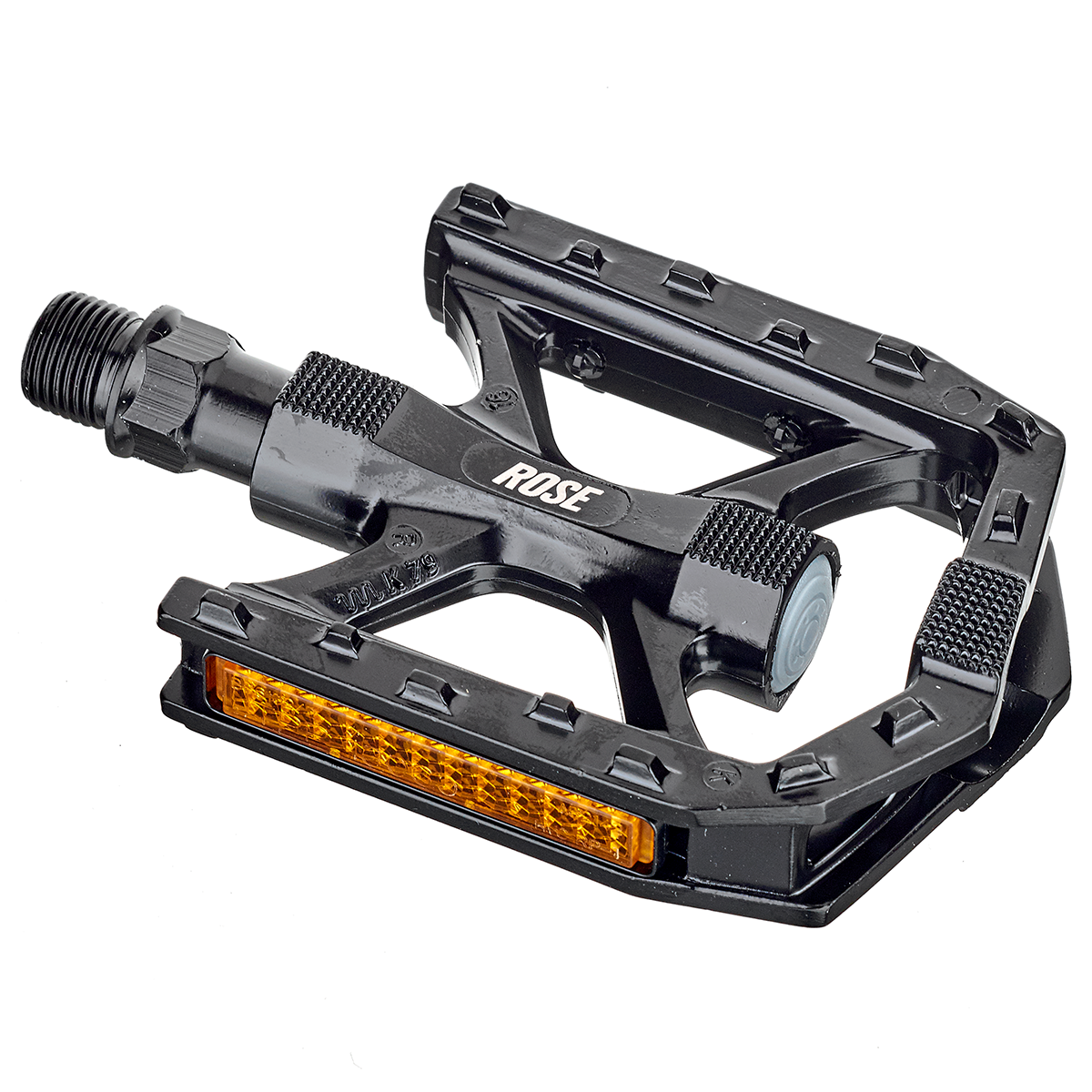;BackgroundColor=ffffff)
;BackgroundColor=ffffff)
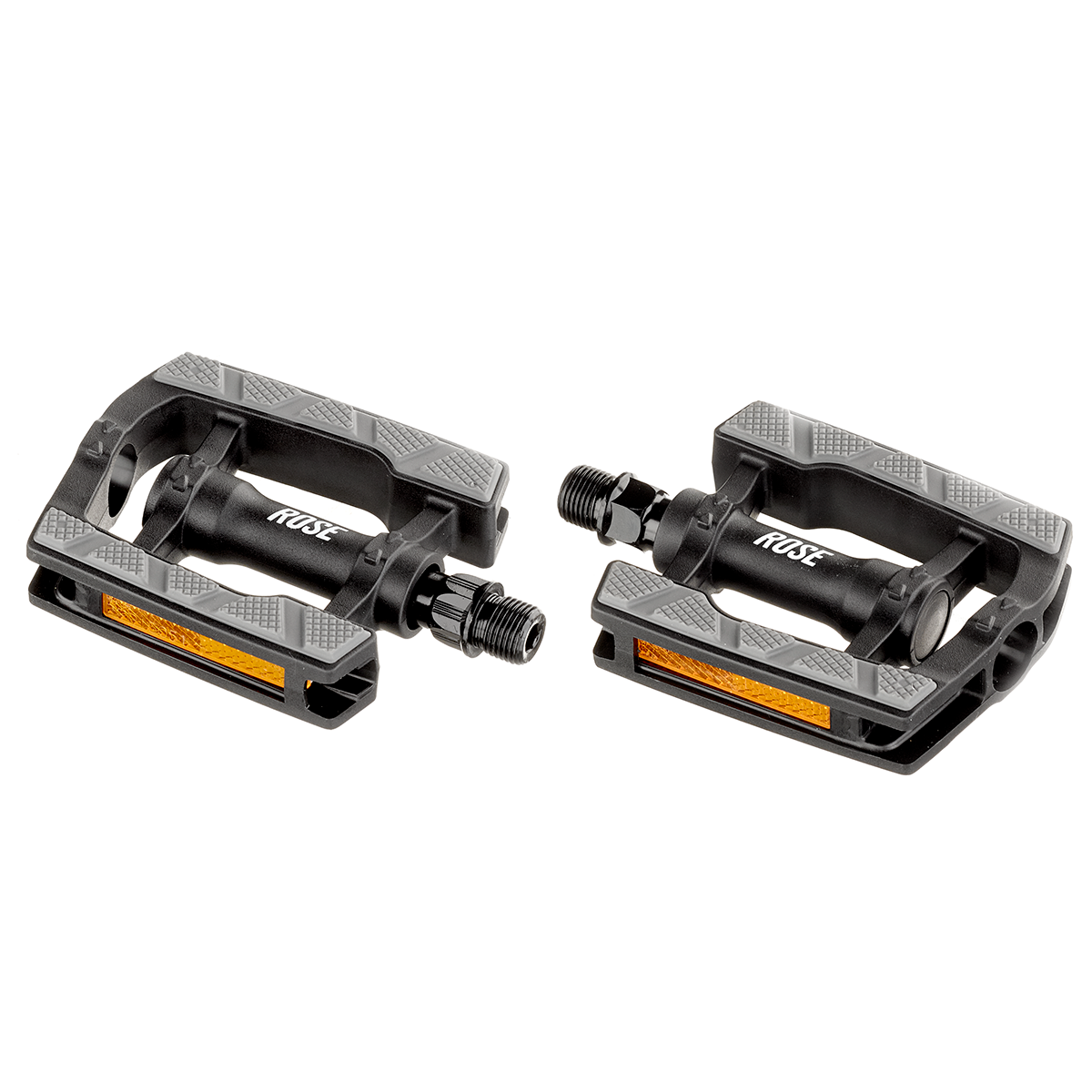;BackgroundColor=ffffff)
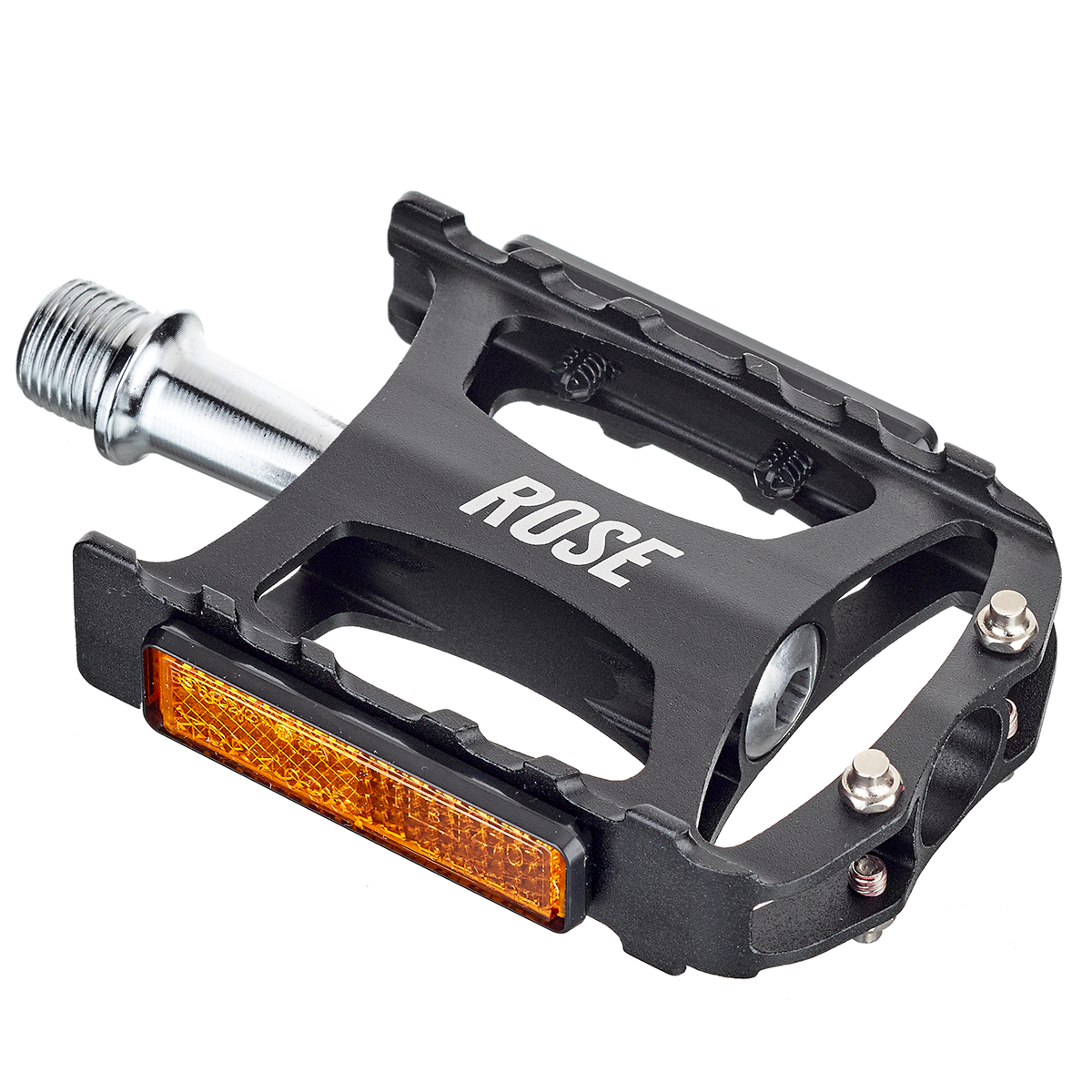;BackgroundColor=ffffff)
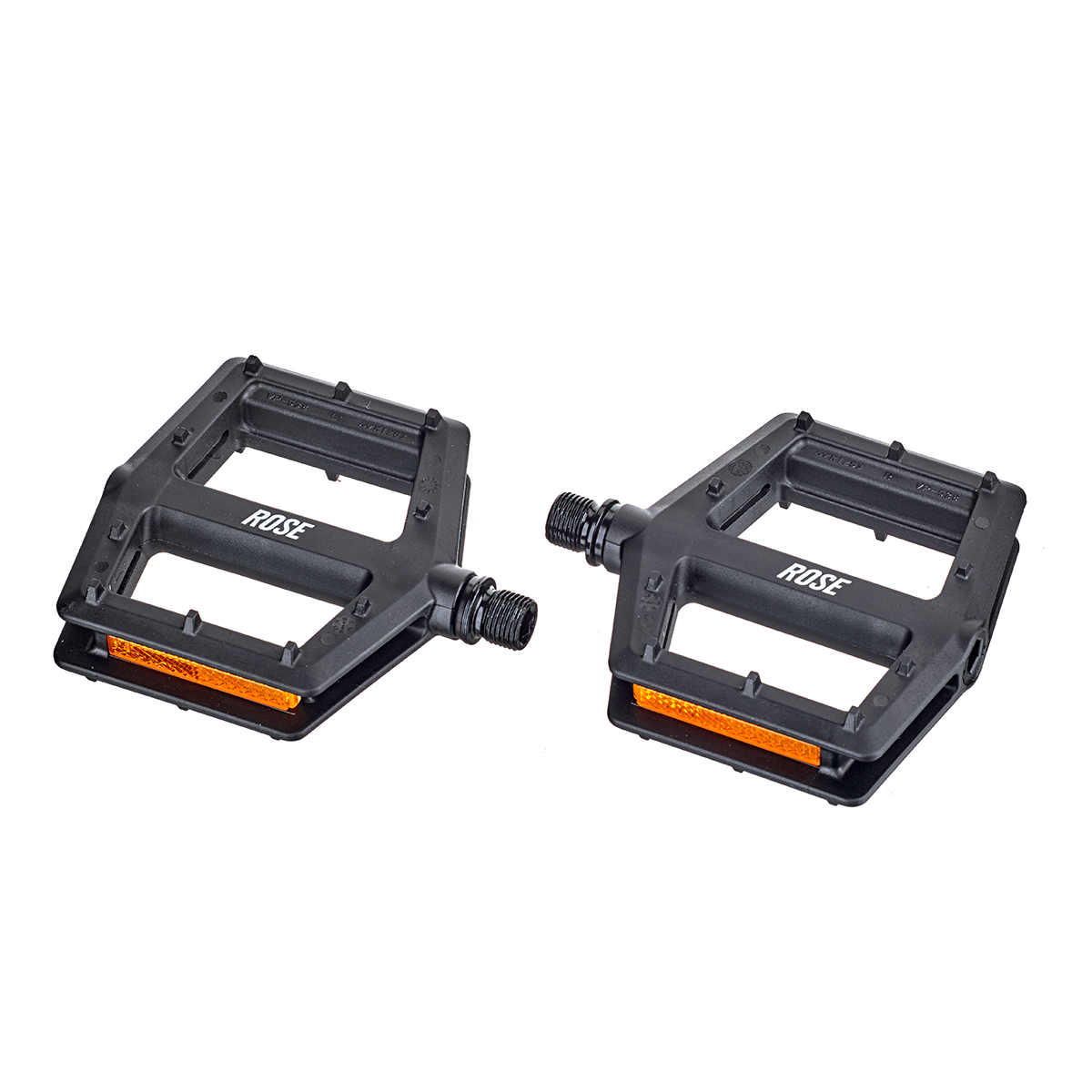;BackgroundColor=ffffff)
;BackgroundColor=ffffff)
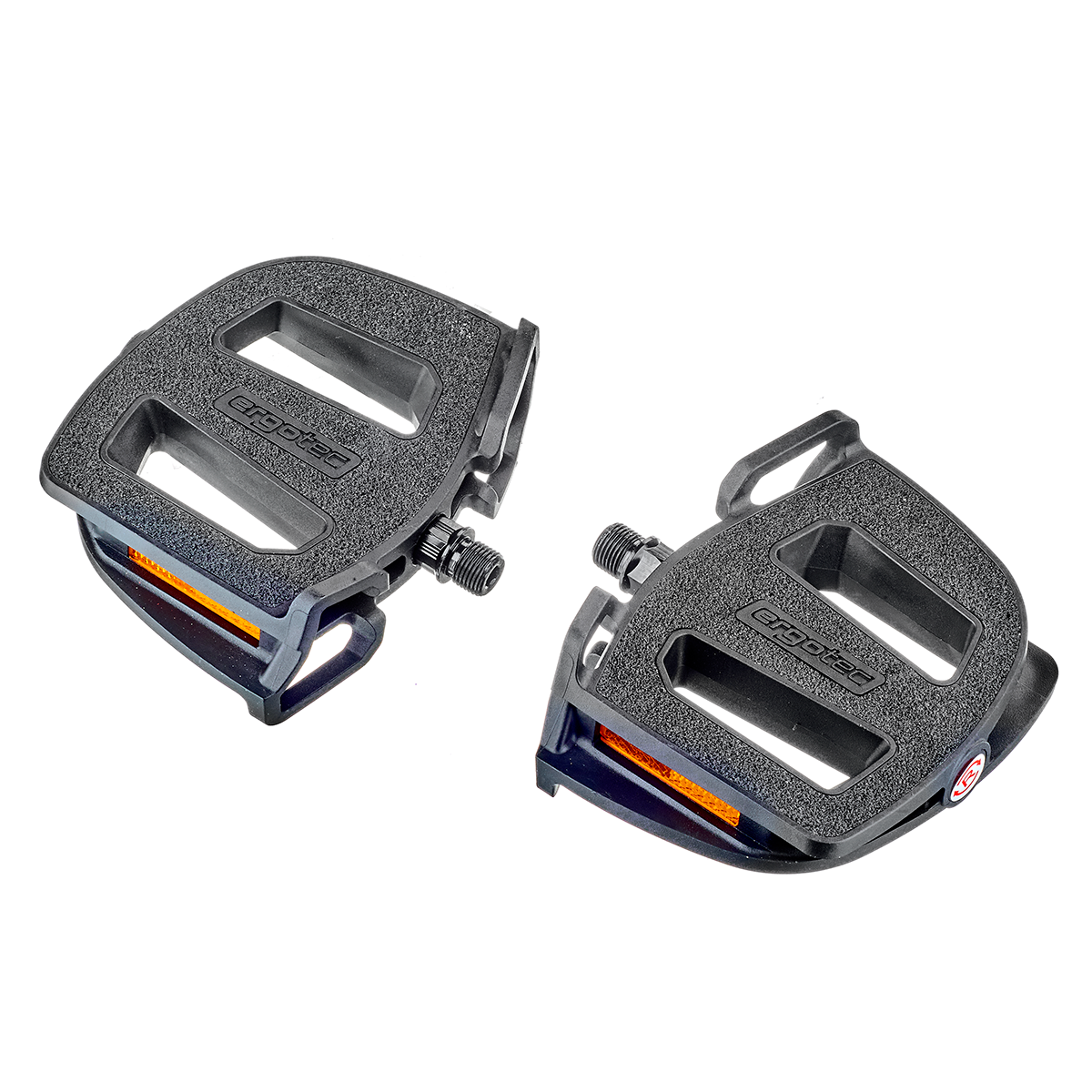;BackgroundColor=ffffff)
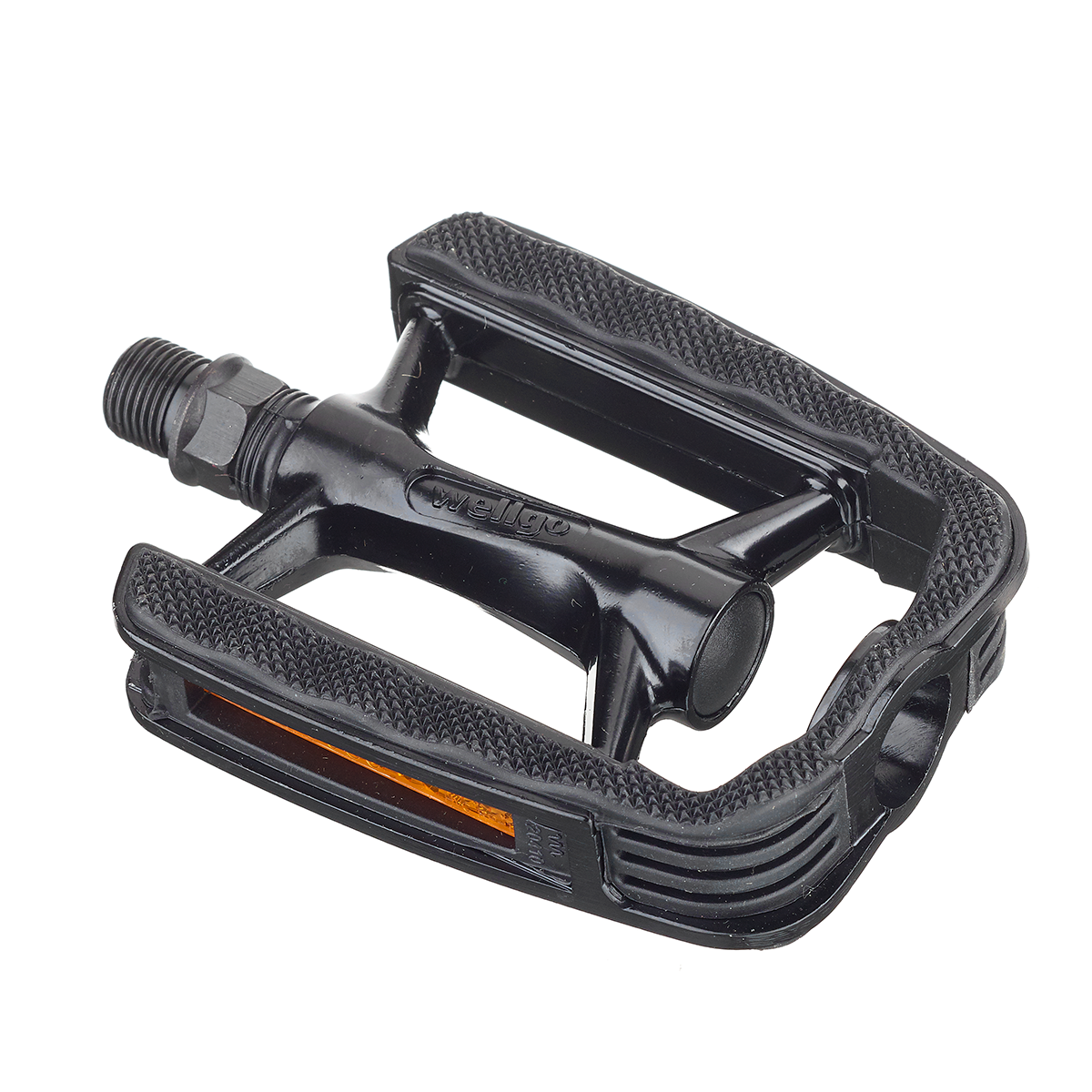;BackgroundColor=ffffff)
;BackgroundColor=ffffff)
)
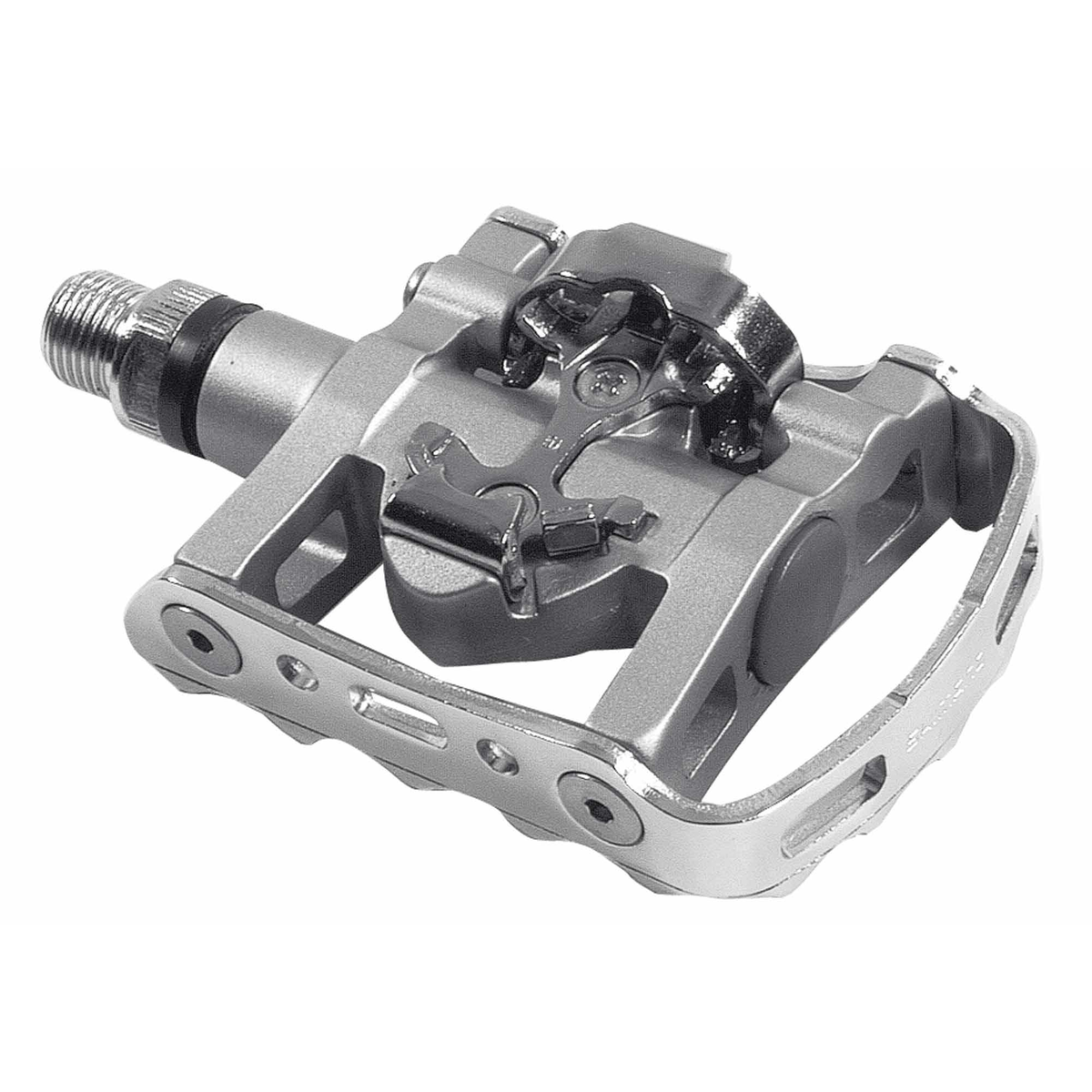;BackgroundColor=ffffff)
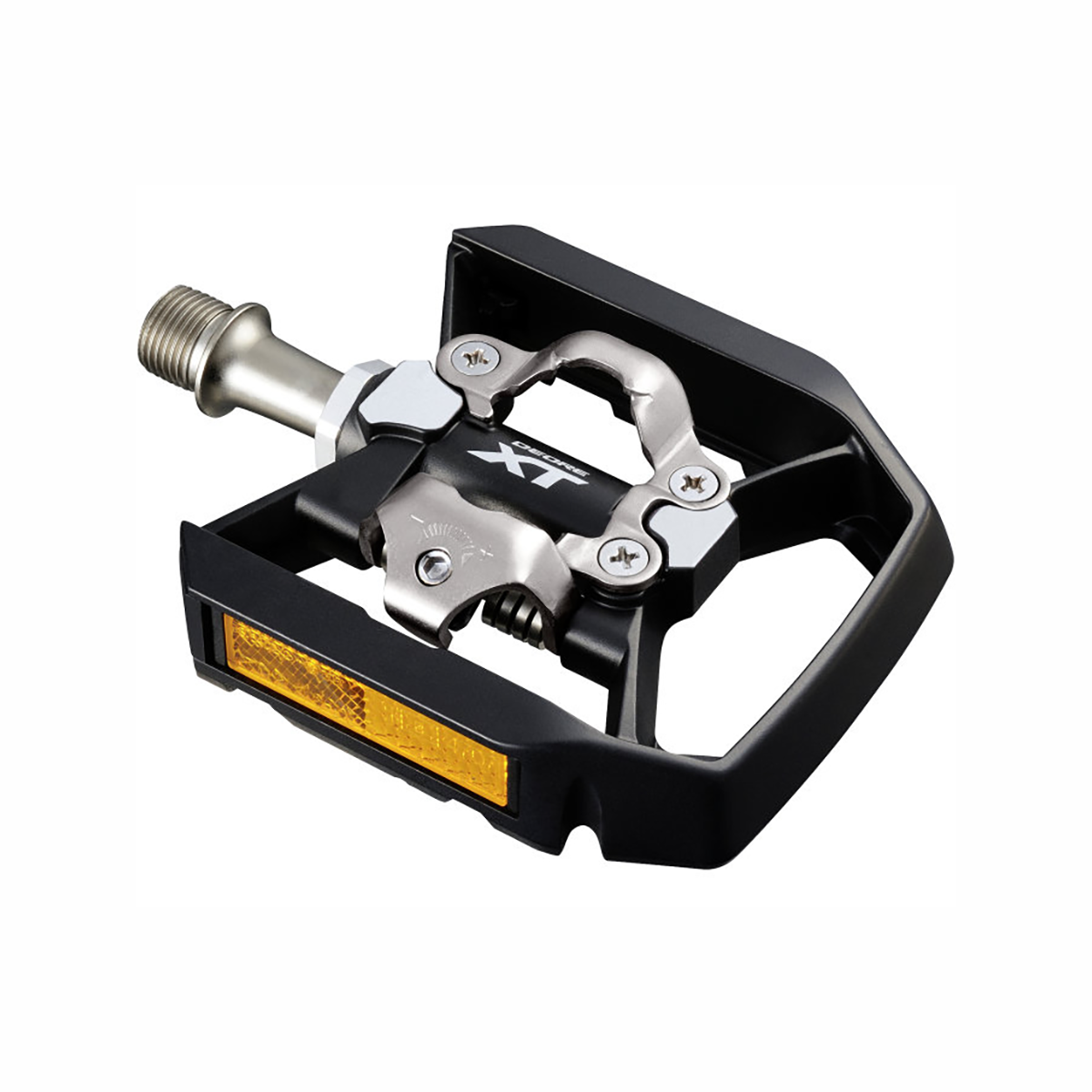;BackgroundColor=ffffff)
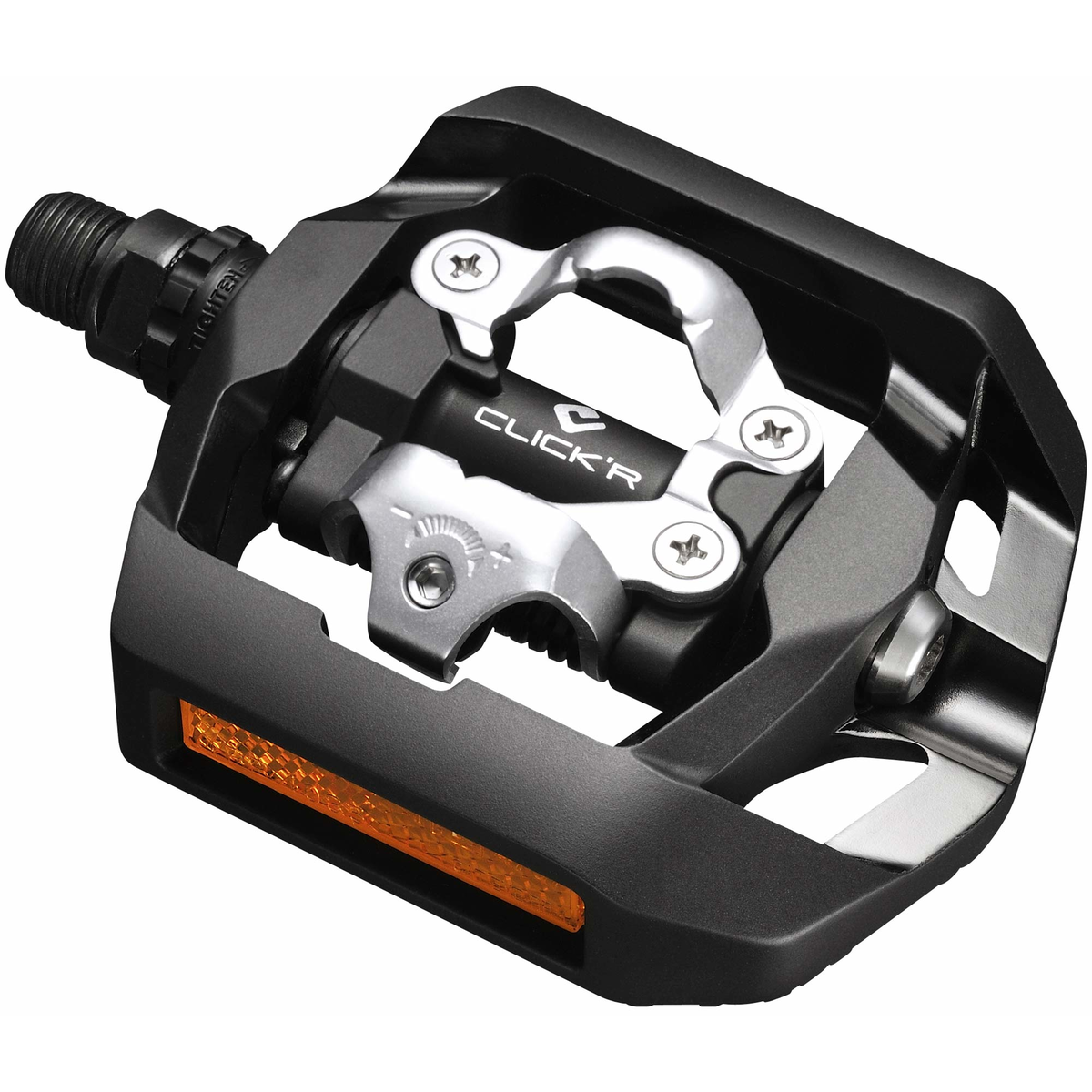;BackgroundColor=ffffff)
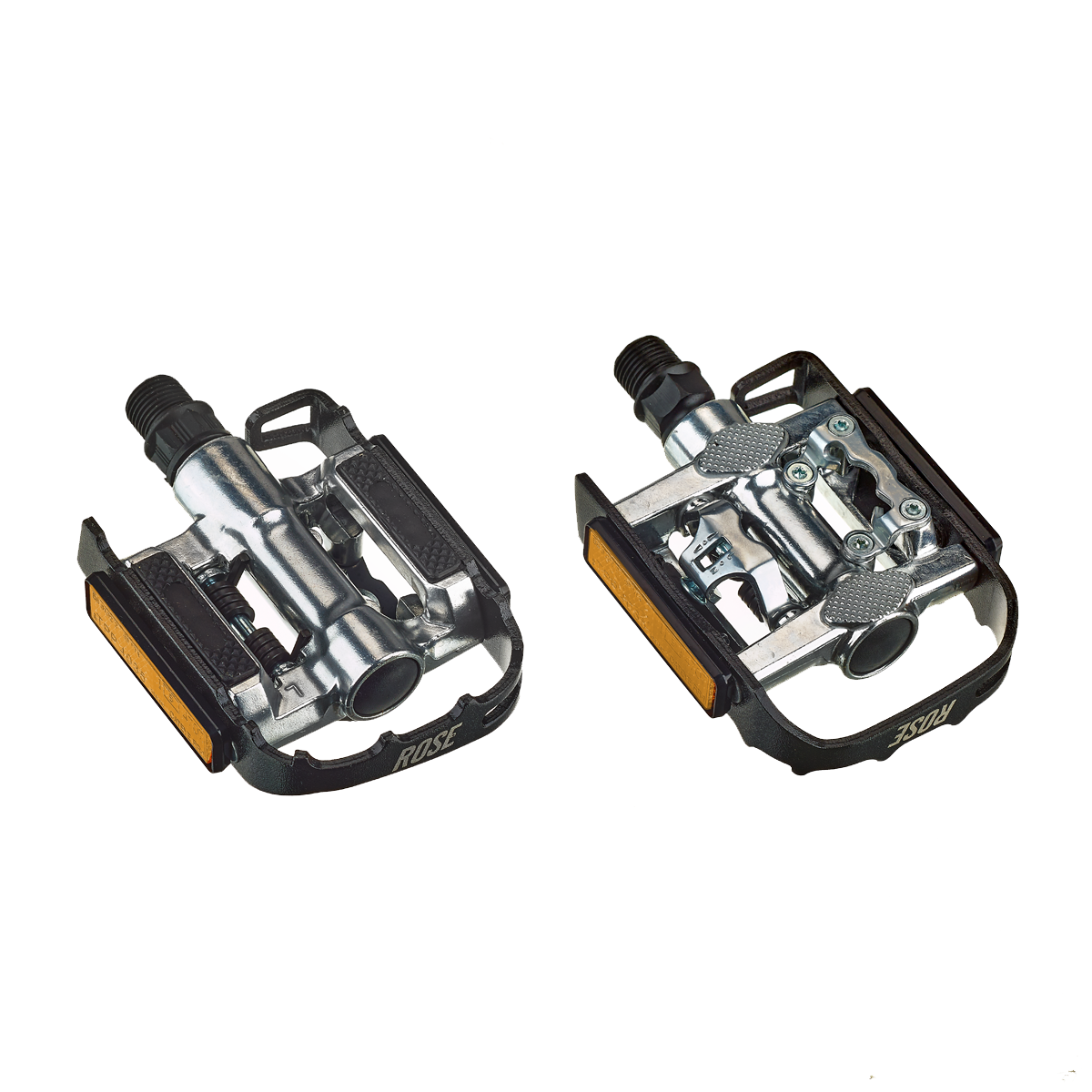;BackgroundColor=ffffff)
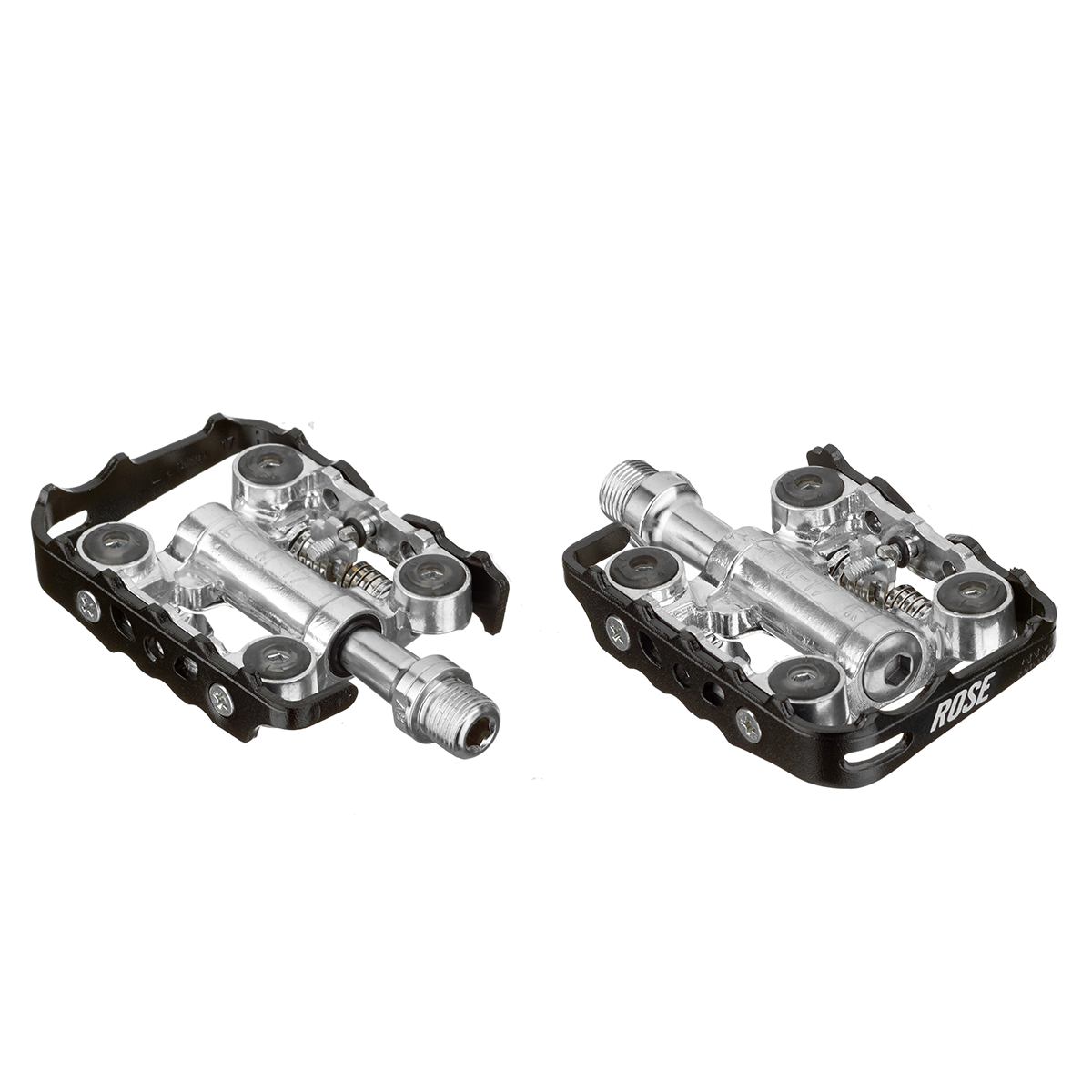;BackgroundColor=ffffff)
;BackgroundColor=ffffff)
)
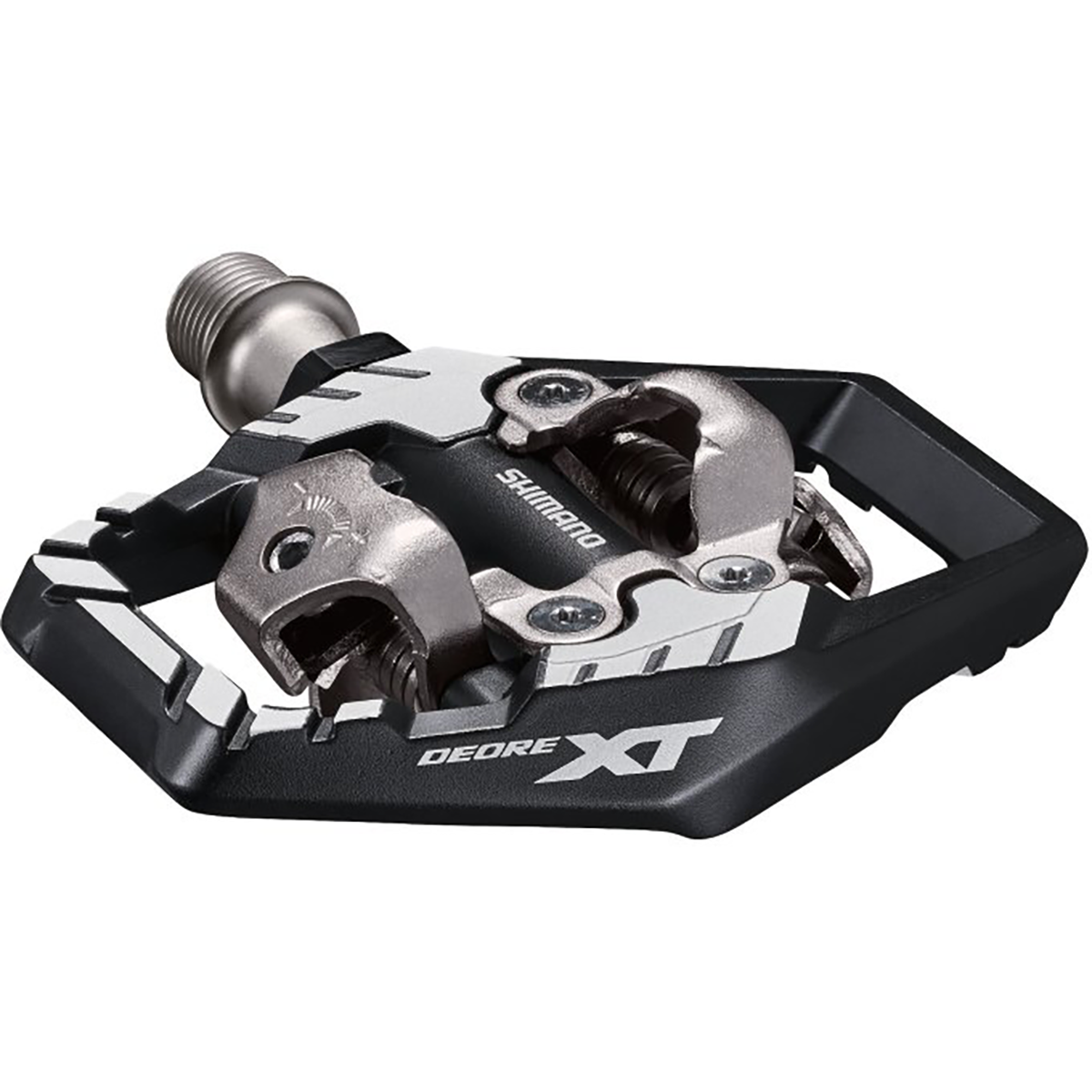;BackgroundColor=ffffff)
;BackgroundColor=ffffff)
;BackgroundColor=ffffff)
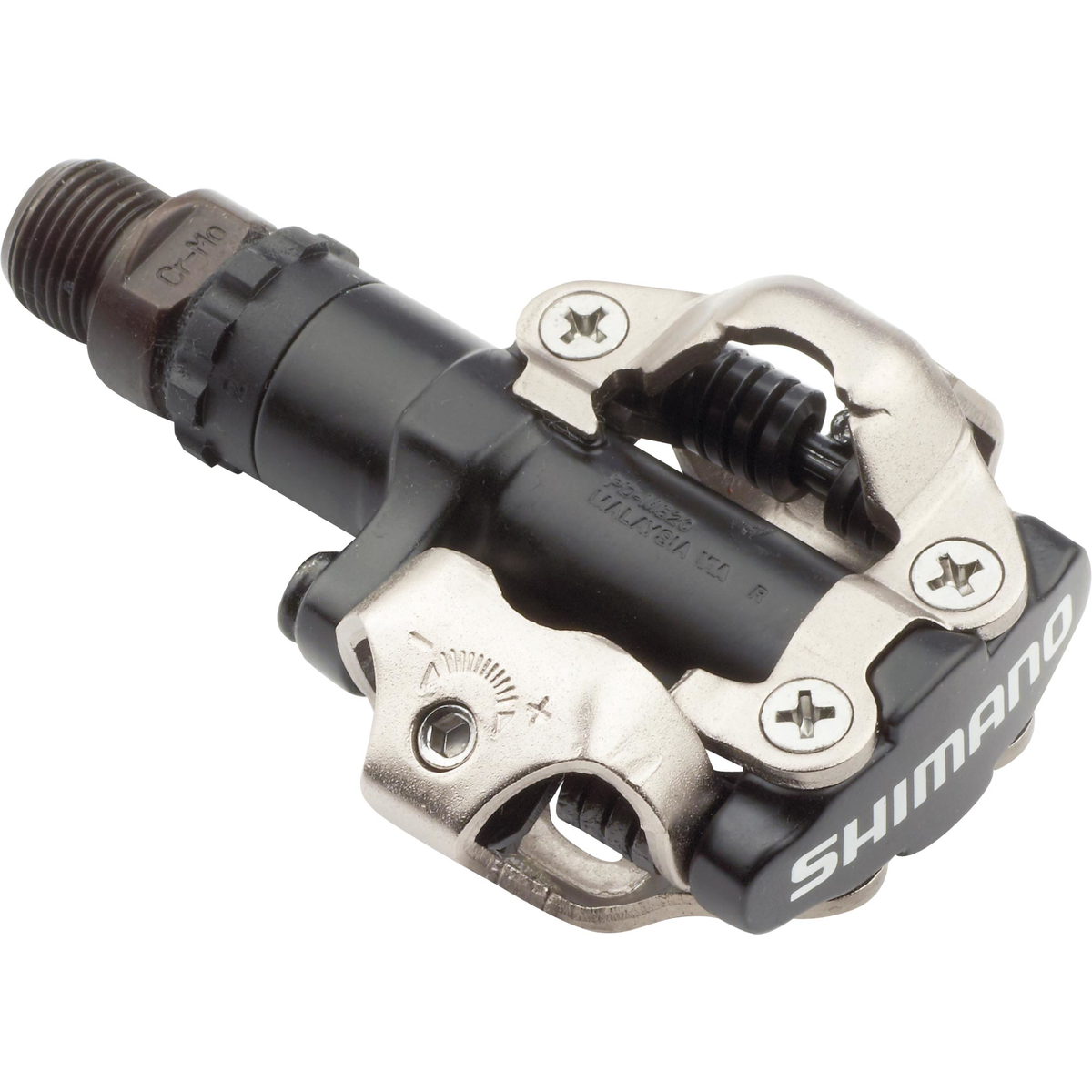;BackgroundColor=ffffff)
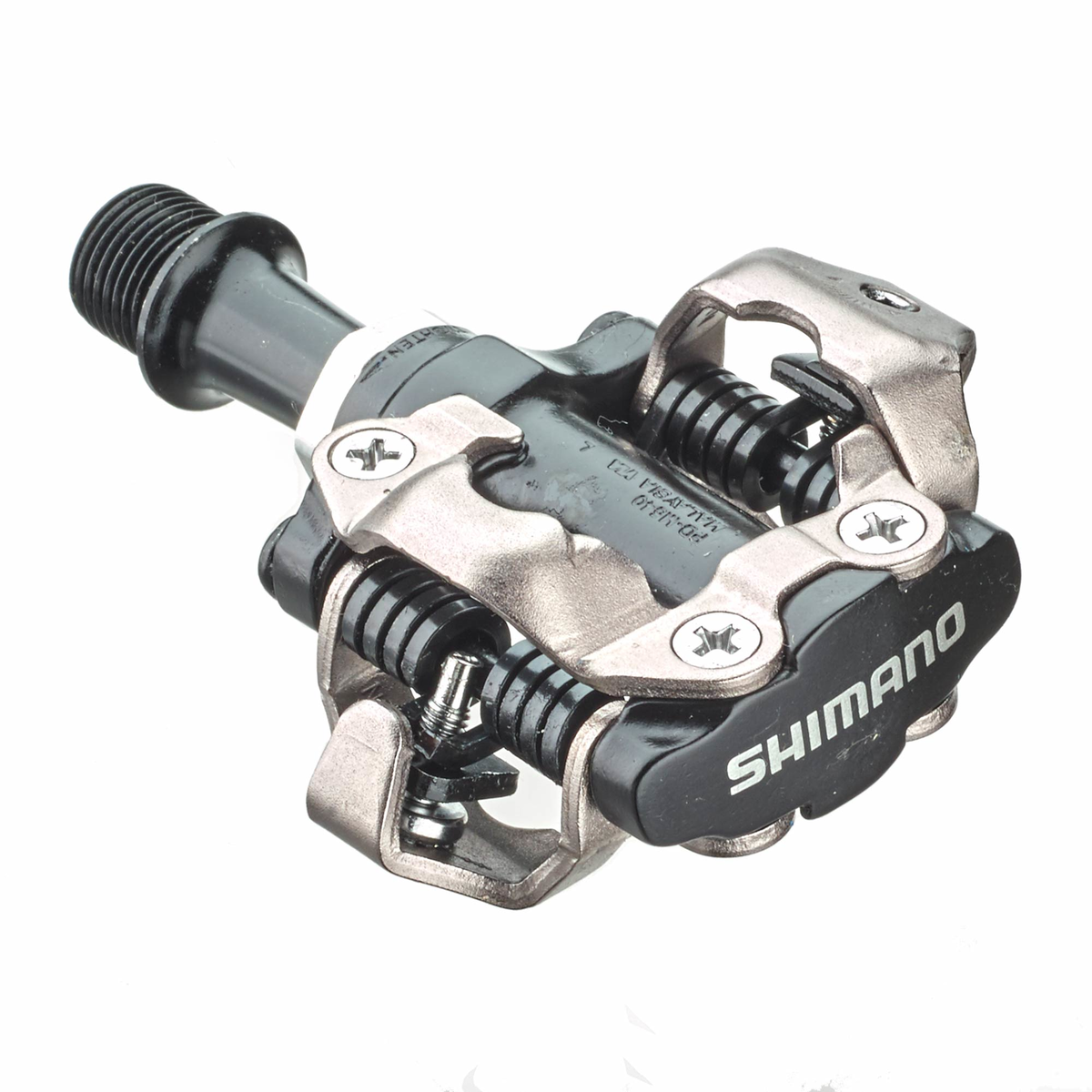;BackgroundColor=ffffff)
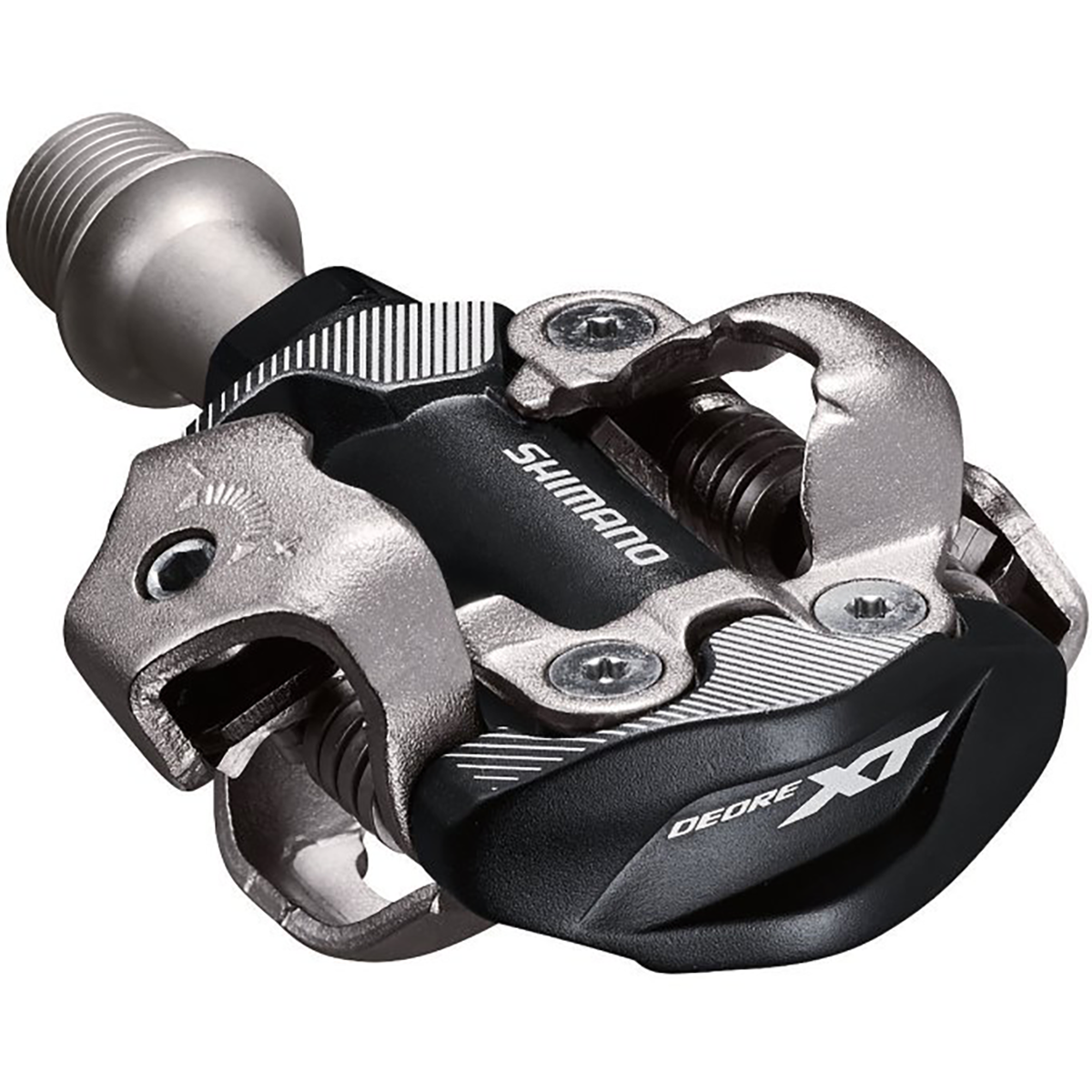;BackgroundColor=ffffff)